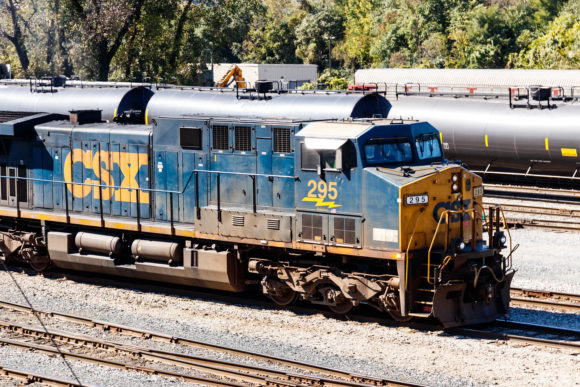CSX Corp.’s lax approach to safety caused a fatal collision between a passenger train and one of the company’s parked freight trains last year, U.S. accident investigators concluded Tuesday.
The National Transportation Safety Board cited what it called multiple layers of failure at CSX that led a conductor to leave a switch in the wrong position, sending an Amtrak train onto a side track. The NTSB also cited U.S. railroad regulators for repeated failures to adopt safety requirements.
“Invariably humans will commit errors,” NTSB Chairman Robert Sumwalt said at the hearing. “We have to have enough redundancy in the system so that when that error is committed that error will be trapped before bad things happen — and CSX failed to do that.”
The collision killed the Amtrak engineer and conductor at 2:27 a.m. on Feb. 4, 2018, in Cayce, South Carolina. Another 74 people were injured, nine of them seriously.
The southbound Amtrak train was operating in a zone of CSX-owned track on which warning switches had been deactivated so the railroad could install a new automated safety system known as Positive Train Control. A CSX conductor had left a switch in a position that sent the Amtrak car onto a side track where the other train was parked, NTSB found.
There were multiple underlying reasons for the accident, investigators found. A form required by CSX to remind workers they’d properly set switches hadn’t been filled out. Mandatory training hadn’t been performed. CSX didn’t follow some of the same protections as other railroads during those conditions.
CSX in a statement called the accident “a tragedy that deeply impacted many people” and said it conducted a review of its practices afterward that resulted in enhancements of operating rules and processes.
“At CSX, every aspect of our operations is governed by rules and procedures designed to safeguard employees, passengers and communities,” it said. “In this incident, those rules and procedures were not followed, and the results were catastrophic.”
The NTSB concluded that CSX’s failures were primarily responsible and they led to the failures of its employees.
The Federal Railroad Administration hadn’t followed earlier recommendations by the NTSB to impose more stringent safety practices when warning signals are disabled, the NTSB concluded. The NTSB voted to classify FRA’s response to its earlier requests as “unacceptable.”
The FRA had “diligently followed up on” NTSB’s recommendation by issuing an advisory urging railroads to take additional precautions during track repairs, such as reducing train speeds, the agency said in a statement.
The NTSB, which issued a series of recommendations, has no authority to impose fines or enact new regulations.
Was this article valuable?
Here are more articles you may enjoy.


 California Governor Seeks $200M to Replace EV Tax Credits Cut by Trump
California Governor Seeks $200M to Replace EV Tax Credits Cut by Trump  First Brands Judge Approves Examiner to Probe Fraud Allegations
First Brands Judge Approves Examiner to Probe Fraud Allegations  Munich Re: Insured Losses From Wildfires, Storms and Floods Hit Record High
Munich Re: Insured Losses From Wildfires, Storms and Floods Hit Record High  Tesla, EEOC Plan Talks to Settle Factory Racism Suit
Tesla, EEOC Plan Talks to Settle Factory Racism Suit 